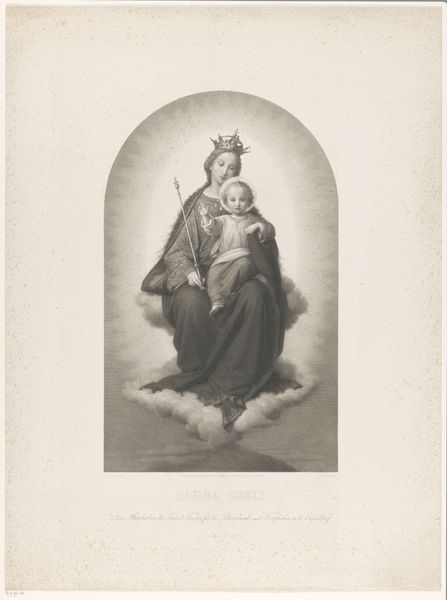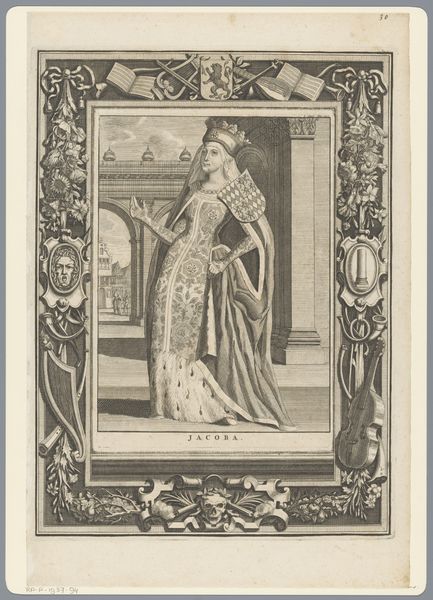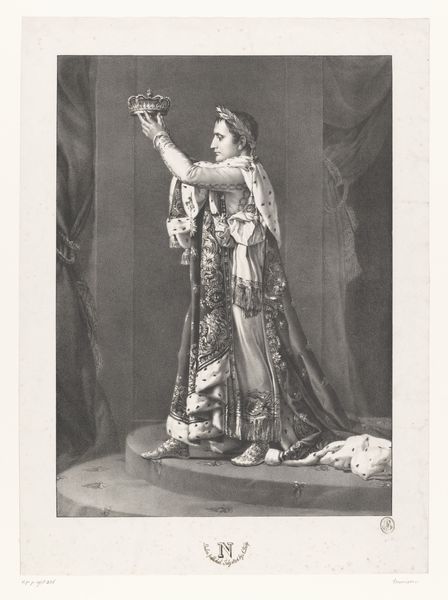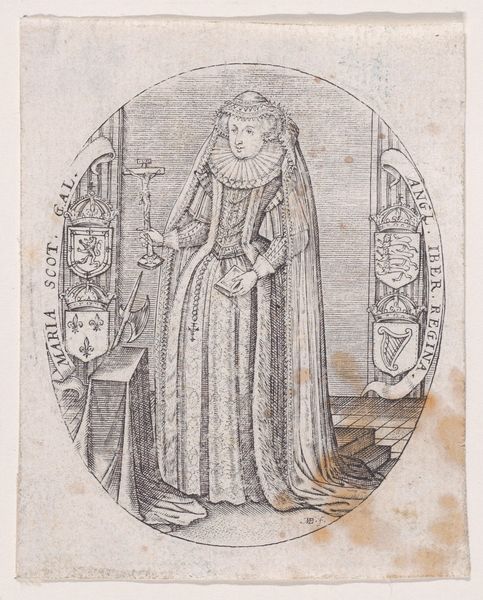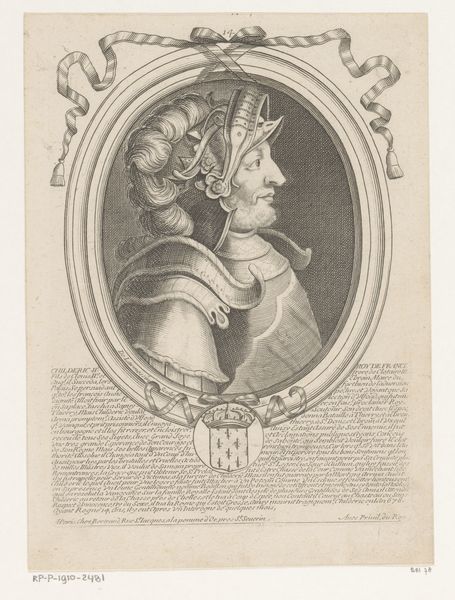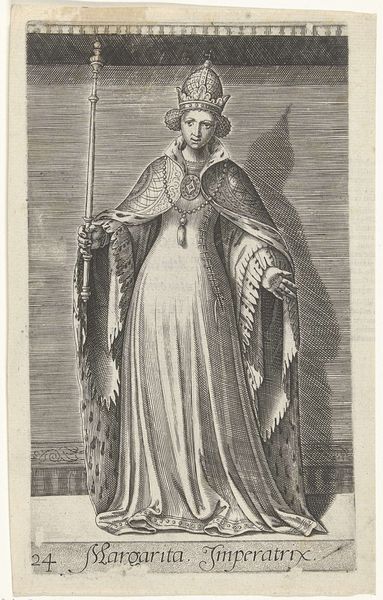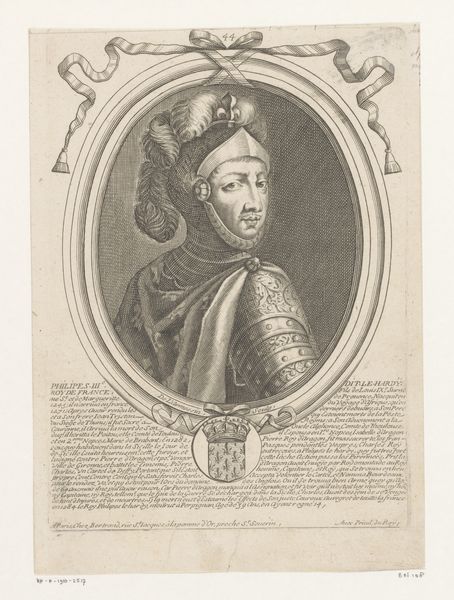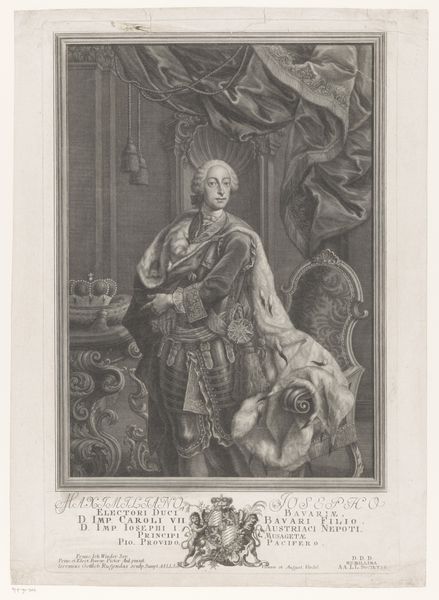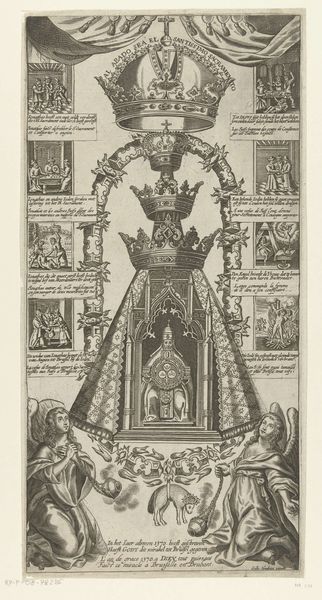
drawing, print, engraving
#
portrait
#
drawing
#
baroque
# print
#
history-painting
#
engraving
Dimensions: Sheet: 8 1/2 × 5 15/16 in. (21.6 × 15.1 cm)
Copyright: Public Domain
Editor: Here we have Charles Grignion's "Mary, Queen of Scots", an engraving from the mid-18th century. I find it fascinating how the artist depicts Mary as both regal and somewhat vulnerable. How do you interpret the image within its historical context? Curator: This engraving offers a window into how Mary's image was politically charged long after her death. Consider that this print was produced centuries later. The Baroque frame itself harkens back to an era of royal power and grandeur, yet it's also being presented to a very different 18th-century public, one grappling with its own ideas about monarchy and nationhood. Editor: So, it's less about historical accuracy and more about...reinforcing or perhaps questioning established narratives? Curator: Precisely. The engraver probably never saw the queen. Prints like these helped shape and solidify popular perception. Look at how she is framed, almost like an object of display. Do you think that contributes to a specific public perception of Mary and the idea of monarchy? Editor: Absolutely, presenting her in this decorative yet confined way could reinforce the idea of royalty as a spectacle. It also hints at her fate, a life of imprisonment and ultimately, execution. Curator: That is an excellent observation. And do you think this particular rendering attempts to elicit sympathy or admiration or maybe something else altogether from its viewers? Editor: It's a mix, perhaps. Admiring her position, but maybe also a subtle sympathy for her confinement. Seeing this piece has made me think more critically about how historical figures are re-presented to shape modern sensibilities. Curator: Agreed, and that's precisely the power of art – it acts as both a reflection of and an active agent in shaping public opinion and memory.
Comments
No comments
Be the first to comment and join the conversation on the ultimate creative platform.


